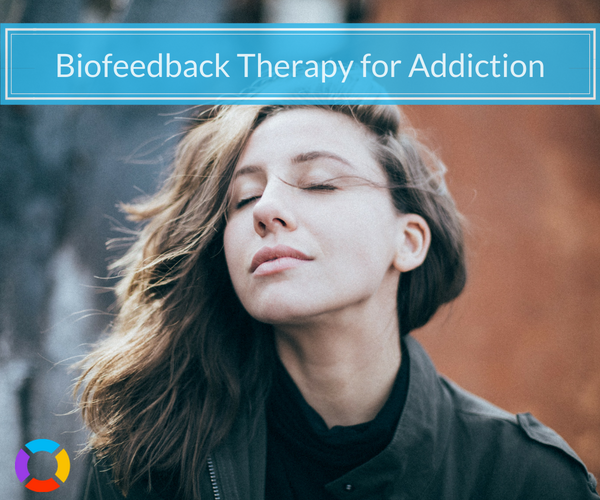Biofeedback Therapy

Biofeedback therapy is a kind of treatment for addiction that involves helping an individual gain control over their body’s functions. It can be extremely helpful for those in long-term recovery who want to avoid relapse. Biofeedback for addiction isn’t right for everyone, but it can be very effective for some people.
What Is Biofeedback Therapy?
Biofeedback therapy is a type of treatment that helps people learn to control bodily functions that normally happen involuntarily. These can include one’s heart rate, blood pressure, skin temperature, sweat, or muscle contraction. There are three types of biofeedback therapies, which include:
- Neurofeedback or electroencephalography, a program that measures your brainwaves
- Thermal biofeedback, a program that measures the temperature of your skin
- Electromyography, a program that measures your muscle contraction
In most cases, neurofeedback addiction treatment is used for patients with SUDs.
How Does Biofeedback for Addiction Work?
People who are going through addiction recovery often experience intense symptoms when they are triggered to use drugs. This therapy shows recovering addicts what those symptoms are in a way that is easy to grasp. Brainwave patterns are measured and shown to the patient as a flash of light or noise pulses so they can understand when they start to increase. Then, a person can learn to control them.
- Patients are hooked up to an electroencephalograph and shown what their responses to negative stimuli are. These could be cravings for the drug, withdrawal symptoms, or triggers that could create cravings.
- Once the patient sees these changes mapped out in front of them, they can learn to recognize their responses. They can then see when they are reacting to cravings, withdrawal, etc.
- The biofeedback therapist then works with the patient to control these symptoms. The person will learn calming techniques and ways to extract mental relaxation. These techniques can include breathing exercises, visualization, or other ways to change your body’s reactions.
- The patient is able to see their progress as they begin to change their body’s reactions to negative stimuli. Over time, they will no longer need to see the changes on a monitor and they will be able to control their symptoms on their own.
Biofeedback therapy has been found to be effective for many individuals going through addiction treatment. A study published in the medical journal Applied Psychophysiology and Biofeedback found that many individuals being treated for opioid addiction were able to achieve positive results with this program in addition to the use of medications.
When Should Biofeedback Therapy Occur?
Biofeedback therapy can occur during detox, as it helps patients learn to control their reactions to withdrawal symptoms. Some withdrawal syndromes can be intense, but there are currently no medications approved to treat them. While pharmacological options may still be used, biofeedback therapy can supplement these by helping the patient learn to control stress.
Of course, biofeedback therapy can also be effective in addiction treatment, especially for those who have been using for many years. These individuals can benefit greatly from the ability to control their reactions toward triggers in order to safely avoid relapse.
How Long Does Biofeedback Last?
Sessions are normally one hour long, and most biofeedback therapists recommend patients receive at least 10 weekly sessions. This amount is usually necessary before they will be able to control their reactions without the help of therapy. This can be shorter or longer, depending on the patient, but most therapists recommend this time frame.
After your session, you will often be given homework to practice every day. This is usually 5 to 10-minute sessions of relaxation exercises with which you’ll need to become familiar. Controlling these reactions will take lots of practice on your part until the relaxation steps become natural.
Is Biofeedback Therapy Dangerous?
No. No dangerous effects have been associated with biofeedback therapy, and most patients are able to benefit greatly from this option. It does not require medications, nor other actions that could produce serious side effects.
However, if you do suffer from dual diagnosis or a substance use disorder with severe mental withdrawal symptoms, you might want to check with your therapist to ensure you will be able to safely navigate biofeedback therapy. It requires concentration as well as an ability to control basic functions, which can be difficult for someone with high psychiatric severity.
Where Can I Find Biofeedback Therapy?
Detox and rehab centers all across the country offer this as an option for addiction treatment. Often, luxury centers provide additional options beyond the basic, evidence-based practices of medication and behavioral therapy, and this could be one of them. Some low-cost facilities may also offer biofeedback for addiction. If your facility of choice does not, they may provide you with a voucher or a community referral to a program that does offer this option.
Sources
- Mental Health in Family Medicine. (2010). Biofeedback in Medicine: Who, When, Why and How?
- Medical News Today. (2018). What Is Biofeedback Therapy and Who Can Benefit?
- Applied Psychophysiology and Biofeedback. (2013). Neurofeedback Training for Opiate Addiction: Improvement of Mental Health and Craving.
- Mayo Clinic. (2018). Biofeedback.

